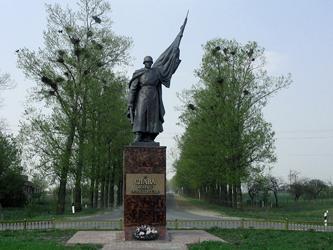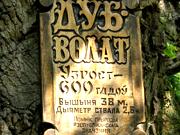Equator trail — discovering nature and heritage of Zhabinka.
Tourist routes of the Zhabinka District - “ZHABINKA ‘EQUATOR’”
Bulkova – Rakitnitsa – Piatrovichi – Fedzkavichy – Rahozna – Leninsky – Chyzhyevshchyna – Khadasy.
This route is intended for visitors who do not plan to stop for long in the Zhabinka area but, traveling along the high-speed Brest–Minsk highway, still wish to get acquainted with notable places located close to the motorway.
The road itself has an interesting history. Founded in 1844–1846 as the Moscow–Warsaw highway, it was popularly called the “Varshavka.” Today the road almost bisects the territory of the Zhabinka District, continuing to play an extremely important role in the fate of the region. Its best-known reconstruction took place in the 1970s, on the eve of the Olympic Games in Moscow, when the highway received another name sometimes still recalled by locals — the “Olympic Road.”

After crossing the bridge over the Mukhavets River, a traveler coming from Brest would do well to turn slightly right to visit the Assumption Church in the village of Bulkova. This settlement has been known since the 16th century and is associated with the final stage of the Battle of Krupchitsy on 17 September 1794, and with the names K. Serakovsky and A. Suvorov. In 1812, the first post station in our region was established in Bulkova.
In the neighboring Rakitnitsa — a rather large settlement serving as the center of the rural council — there are a number of monuments dedicated to the Great Patriotic War. Among them is the Mound of Memory, raised in 1967 to honor local residents who went to the front and laid down their lives on foreign soil. In the village cemetery a modest grave of victims of fascism is preserved, containing the remains of 36 peaceful residents tortured in the autumn of 1942.
The next village, Piatrovichi, has an extremely interesting, almost 500-year history. In the 19th–early 20th centuries it had one of the best postal stations in Belarus. In fact, the birth of the postal service in the Zhabinka area coincides with the founding of the Piatrovichi station, where many famous persons stopped, including the artist, composer and teacher Napoleon Orda, who painted Piatrovichi twice — the ancestral nest of the Dzyakonski family. In the very center of the village stand the majestic Piatrovichi oaks. Each of them is over 550 years old. On the territory of the Piatrovichi forestry, there are also the only exotic species found in the Zhabinka area: small-leaved linden and Weymouth pine. Since 1974 a small monument has stood outside the village at the grave of victims of fascism executed in the autumn of 1942.
The traveler should then return to the highway to continue toward Fedzkavichy — the birthplace of A.A. Trophimuk (1911–1999), academician of the Russian Academy of Sciences, Hero of Socialist Labour, a geologist who was fortunate enough to be the discoverer of numerous oil and gas fields. In the village there is a beautiful monument to the liberating soldier, erected in memory of the events of 18–21 July 1944, when our land was liberated from the Nazi occupation.
In the Zhabinka area a church destroyed in the years of hardship is gradually being restored — in the village of Rahozna. Its pastor, Nikolai Mikhalovsky (1900–1943), tortured by the occupiers for his links with the partisans, remains in the memory of the district’s residents as an example of selfless service to the Motherland and to faith.

In the settlement of Leninsky, the next stop on the route through our district, visitors can see not only the monument to fellow villagers, erected in 1966 to immortalize 62 compatriots, but also the old Atyachyzna Park, founded at the turn of the 19th–20th centuries through the efforts of the well-known Belsky princely family in the history of Belarus and Russia. The park preserves a majestic 600-year-old Giant Oak, and nearby stands the distillery building constructed in 1905.
A few kilometers further, a roadside sign will announce the approach to the village of Chyzhyevshchyna. This place is widely known for its historical past, especially the famous battle on the Krupchitsy field. In memory of that event a whole complex of monuments has arisen around the village, including the Vladimir Church, a monument to Suvorov’s soldiers, and the Krupchitsy chapel, which is often visited not only by guests from Belarus but also by people from various parts of Europe and America.
The last village near the highway, located almost on the border of the Zhabinka and Kobryn districts, is Khadasy, known for a sorrowful page of our history. In 2004 human remains of approximately 200 victims of Nazi genocide were found at the site of the former Khadasy ghetto. They were reburied with honor, and a memorial sign — a stone and a six-pointed star — was erected at the site of this merciless atrocity.